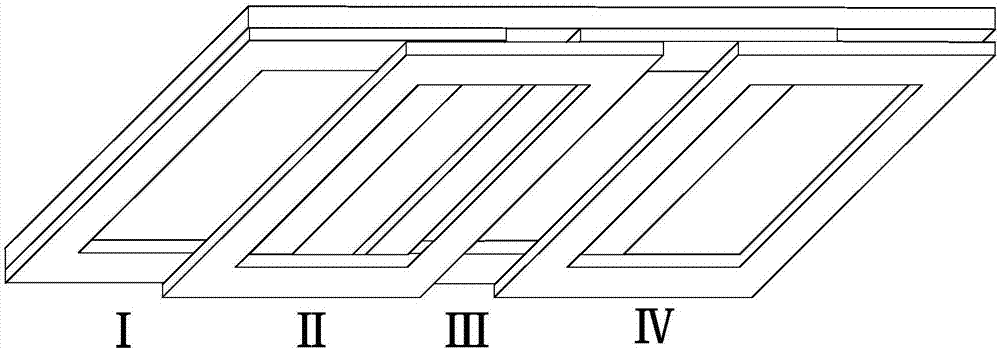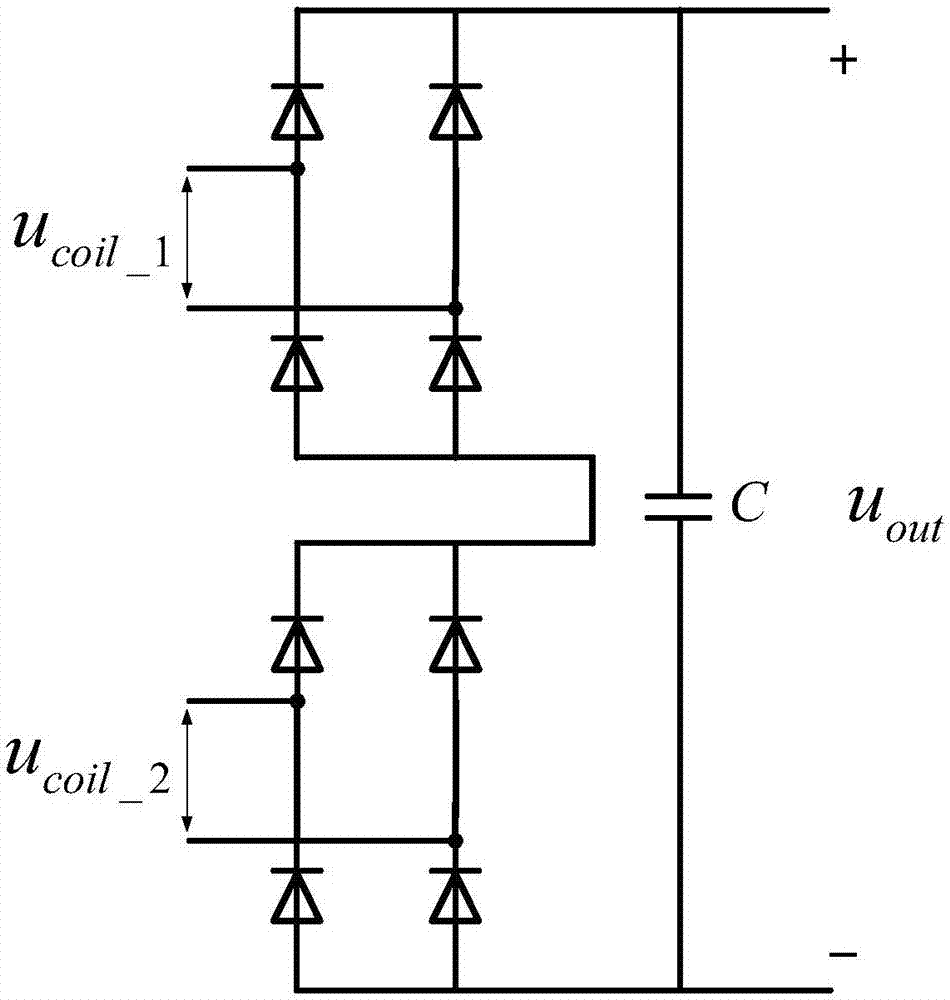Four-coil receiving device improving mobile wireless electric energy transmission quality, and application of four-coil receiving device
A receiving device and wireless energy technology, which is applied in the direction of circuit devices, power management, transportation and packaging, etc., can solve the problems affecting the use effect of electric vehicles and other equipment, affecting the quality of wireless energy transmission, and damaging energy storage equipment. Effects of transmission efficiency, cost reduction, and pressure reduction on energy storage equipment
- Summary
- Abstract
- Description
- Claims
- Application Information
AI Technical Summary
Problems solved by technology
Method used
Image
Examples
Embodiment 1
[0031] This embodiment provides a four-coil receiving device for improving the quality of wireless power transmission, which includes two sets of coil groups, each of which includes two coils, the two coils are connected to each other and facing Emitter, so that the two coils in each group of coils have a phase angle of 180 degrees in the space magnetic field, so that the space magnetic field induces two opposite electromotive forces on the two coils, and passes between the two coils. The opposite physical structure allows the electromotive forces generated on the two coils to be superimposed.
[0032] There is a 90-degree phase angle difference between the two sets of coils in the spatial magnetic field, so that when the magnetic flux passing through one set of coils is the largest, the magnetic flux passing through the other set of coils is the smallest.
[0033] It also includes an outer rectification circuit, wherein the output end of each set of coil groups is connected t...
Embodiment 2
[0037] This embodiment provides an application of the four-coil receiving device provided in Embodiment 1 to improve the quality of wireless power transmission, which is used for mobile wireless charging of electric vehicles (also known as "charging while walking"), and decomposes the energy supply track For different polarities, the bottom of the vehicle is equipped with a receiving device with four coils. During the movement of the vehicle, the four coils obtain energy at the same time, but the output voltage is relatively stable due to the difference in the phase of the spatial magnetic field.
Embodiment 3
[0039] This embodiment provides an application of the four-coil receiving device provided in Embodiment 1 to improve the quality of wireless power transmission, which can be used in all situations that do not have a battery or rely solely on energy storage equipment for insufficient running time or that the cost of energy storage equipment is too high Mobile electrical equipment, when these equipment are in any position of the track laying direction, the energy can be directly transmitted from the energy supply track to the receiving equipment end, so as to realize the stable power supply of equipment without energy storage (or with less energy storage capacity).
[0040] In this embodiment, the insufficient running time solely relying on the energy storage device refers to the situation that the running time is less than or equal to 50% of the actual required working time after a full charge.
[0041]In this embodiment, the situation that the cost of the energy storage equipme...
PUM
 Login to View More
Login to View More Abstract
Description
Claims
Application Information
 Login to View More
Login to View More - R&D
- Intellectual Property
- Life Sciences
- Materials
- Tech Scout
- Unparalleled Data Quality
- Higher Quality Content
- 60% Fewer Hallucinations
Browse by: Latest US Patents, China's latest patents, Technical Efficacy Thesaurus, Application Domain, Technology Topic, Popular Technical Reports.
© 2025 PatSnap. All rights reserved.Legal|Privacy policy|Modern Slavery Act Transparency Statement|Sitemap|About US| Contact US: help@patsnap.com



